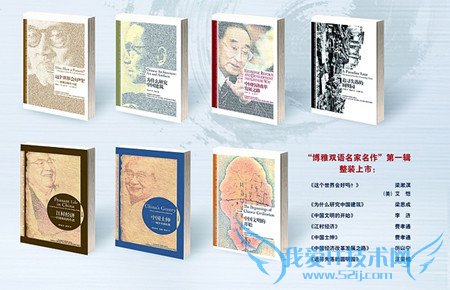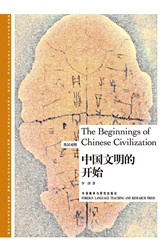��ӭ������52ijӢ��������������С��Ϊ�������Ӣ��֪ʶ�ǣ���������˫��������������ã��й������Ŀ�ʼ��һ��������������ϸ�ķ�����
������˫��������������ã��й������Ŀ�ʼ��һ��

The Beginnings of Chinese Civilization�й������Ŀ�ʼ
����飺��ã������ѧ��ѧ��ʿ������ѧ������ѧ�ң��й�����ѧ֮�����������塢�����ͳ����¿��ŷ�����쵼Ӱ����20�����°�Ҷ�й�����ѧ�ķ�չ��
���ݼ�飺�Ἧ������ڿ���ѧ������ѧ������ߴ����Ե�Ӣ�����ģ����ڻ�ʢ�ٴ�ѧ���ܡ�ʹ�����Ļ��ɴ�˵��Ϊ��ʷ���İ������淢����ݽ��ͷ����й��ִ�����ѧ���γɡ���֤�л�������Դ�����¡�
ARCHAEOLOGY ����ѧ
Antiquarian studies in China began to develop in the beginning of the Sung Dynasty (960-1126*, A.D.). They enjoyed a glorious period for more than one hundred years, during which a solid foundation was laid for later development. The classical revival in the eighteenth and nineteenth centuries included a very strong current of antiquarian interest, which has been rightly considered as the direct descendant of Sung scholarship. Western science began to affect China seriously, only at the beginning of the twentieth century. So the concept of modern archaeology in China may be said to be developed from two entirely different, but mutually complementary traditions: on the one hand, it is related to that special branch of classical learning known as the Study of Metals and Stones; and on the other, to the field explorations and excavations, which were first developed in the science of geology and biology, and from which archaeology in the West has been gradually evolved. Such being the case, archaeology, therefore, unlike most other natural sciences which have come to China unprecedented, serves best to link together modern science and traditional Chinese learning. In order to make a proper estimate of what is being done at present and what can be achieved in the future, it is necessary that something should be known of China��s antiquarian past.���й����Թ�����о����γ���960 �ꡫ 1279 �꣩���ھ��Ѿ���ʼ������չ����ʱ�����а�����Ķ�ʢ�ڣ�Ϊ�Ժ�ķ�չ�춨�˼�ʵ�Ļ�����18 �� 19 ����ѧ�ĸ��˰�����һ�ɹ����ȵķ糱������ȳ�����Ϊ����ѧһ����У����ֿ�������ȷ�ġ�������ѧ��ʼ���й�����ʵ�ڵ�Ӱ�죬������ 20 ���ͳ��Ժ���ˣ��й���������ѧ�ĸ������˵�Ǵ�������Ȼ��ͬ���������Ĵ�ͳ��չ������һ���棬���Ǵ��й��ŵ�ѧ���еĽ�ʯѧ��һ�����֧��չ��������һ���棬���������ѧ������ѧ�����ȷ�չ��������Ұ��������·�����ϵ��һ����������ѧ���Ǵ���Щ��ѧ����չ��������Ȼ��ˣ���ô���������й���һ�νӴ�������Ȼ��ѧ��ͬ������ѧ���õؽ�����������ѧ���й��ŵ�ѧ����ϵ������Ҫȷ����Ŀǰ���ڽ��еĹ�����δ���ɴ�ɵ�Ŀ�꣬�б�Ҫ���й���ѧ�о�����ʷ��һ���˽⡣
Historical Background��ʷ����
In a paper published by the late Professor Wang Kwo-wei on ��Archaeology in the Sung Dynasty,�� he pointed out the distinct achievements by Sung scholars in archaeology, in several different fields. The more important of these are collecting, recording, and identifying. In all these their merits rank very high; some remain unsurpassed down to the present time. It is interesting to note that this is only part of the result of a broad intellectual movement of the Sung Dynasty, which yielded important achievements in many different spheres. The whole movement was characterized by a great deal of constructive effort; many of the monumental works on history, treasures of Chinese spiritual possessions, date from this period. While the interest in antiquities was no doubt a phase of the historical mentality of the time, it attained an independent development in the very beginning. Works on this subject left to us from this period are strangely modern in many of their ideas. ���ѹ�����ά���ڷ����ġ��δ�֮��ʯѧ��1һ���У���ָ���δ�ѧ���ڽ�ʯ�о��������ȡ���˷Ƿ��ɼ��������������Ѽ�����¼�Ϳ������档�������о�����֮���������˼��ߵijɾͣ���Щ�����������ܼ���Ӧ��ע�����ֻ���δ��ⳡ���˼���˶��IJ��ֽ�����ⳡ�˶������ͬ����ȡ������Ҫ�ɹ����˴��˶�������ֳ����߽����Ե��ص㣬����ʷѧ����������Ƹ�����Դ���Ǹ�ʱ������Ȼ���ڹ������Ȥ����ֻ���δ�ʷѧ˼�뷢չ��һ���Σ�������һ��ʼ�ͻ���˶����ķ�չ����һʱ�������������й���һ��������������е��������������ϵؾ��н���������
It is true that there was neither historical nor comparative method, nor any attempt at a comprehensive system, but the effort aimed at accurate presentation and reproduction, and many of their identifications are quite praiseworthy. K��ao Ku T��ou and Po Ku T��ou published between the eleventh and twelfth centuries A.D. are more than a collector��s handbook. In them a system was created for recording and reproducing antiquities, which, except for minor details due to improvements in modern printing, has been taken as a model of all treatises on antiques till the present day. It may not be possible to test the accuracy of their measurements or reproductions, but their aims at being accurate are more than obvious; and the ingenuity and correctness of most of their identifications have been confirmed by modern criticism. As printing was at that time already invented, so the vogue of collecting spread fast. What is more remarkable is that the fashion of collecting was created and maintained chiefly by private individuals, in spite of the fact that the largest and the most well-known collection is an Imperial one. Thus Professor Wang says in his paper on ��Archaeology in the Sung Dynasty��:��Ȼ����ʱû����ʷ������û�бȽϷ�������û����ͼ����һ���ۺ���ϵ����������ȷ�������Ƶ�Ŭ���Լ����ǵ��������������ֵ�óƵ��ġ�11 �� 12���ͳ���ġ�����ͼ���͡�����ͼ������������һ���ղ�ָ�ϣ����д�����һ����¼���ƹ����ϵͳ�����������ӡˢ�����ĸĽ�����ɵ�������ϸ���ϱȽ�����⣬��һϵͳֱ�����춼���ⷽ�������ĵ䷶��Ҳ�������������븴�Ƶľ�ȷ�̶ȣ�����������ȷ��Ŀ�����Զ����ģ������ڱ�ʶ���﷽����ֳ��Ķ����Ժ���ȷ����Ϊ������������ӡ֤��������ʱӡˢ�����ѷ�������ˣ��ղع���֮�紫�����졣�����˾�̾���ǣ�����������������ղ��ǻ����ղأ����ղ�֮����ȴ��Ҫ���ɸ��˿�����ά�ֵġ���ˣ�����ά�������䡶�δ�֮��ʯѧ��һ����˵��
Remarkable as was the Imperial collection, the fashion of collecting ancient objects, however, was created by private individuals. History records that Liu Ch��ang, when governor of Yung Hsing (present Hsianfu in Shensi), secured eleven objects of pre-Ch��in periods; and that Li Kung-lin, having a wide acquaintance with objects of antiquity and being skilful in judging them, showed such enthusiasm, that whenever he heard of an object of value, he would not hesitate in the least to pay a price of a thousand taels. Books such as Lü Ta-lin��s K��ao Ku T��ou, Hsu K��ao Ku T��ou by an unknown author, Wang Fu-chai��s Chung Ting K��uan Shih, and the appendices of the Tsih Ku Lu and Chin Shih Lu, very frequently record the names of the collectors underneath the descriptions of the objects. The collectors thus recorded numbered no less than several scores.... (p. 223)�������Ͳ���֮�������Բ����Ҳ��Ȼ�����Ѽ�����֮�磬ʵ��˽�ҿ�֮������֪���˾� [ ��ɽ�� ]�������ع���ʮ��һ���벩�ᆱ������һ����ǧ���ٽ�����������ͼ���������ϡ�������ͼ��������ի���Ӷ���ʶ���Լ������š�������ʯ����¼��β�������ڸ���֮��ע������֮�ң����˲�����ʮ������223 ҳ��
The scope of those collections included mainly bronzes and jades, but coins and some kinds of stone work were sometimes also included. Although they concentrated most of their interest on inscriptions, it is the merit of the Sung archaeologists that they were able to see, in the antiques which they were collecting, important materials for studying ancient institutions. It was the common belief of the Sung antiquarians that it needed men versed in rituals to know the usage of antiques. Thus they made two great contributions towards the gradual building up of an antiquarian science in China: namely epigraphical study, and identification of forms, besides their persistent effort in collecting, reproducing, and circulating. In about one hundred years or so, they created a new science and perfected a new technique.��Щ�ղصķ�Χ��Ҫ������ͭ����������������Ǯ�Һ�ʯ����ʱҲ���ղ�֮�С������δ��ؼ��ǵ���Ȥ��Ҫ���������ϣ����ǣ����ǵĿɹ�֮�����ڣ��������������ղصĹ���֮�п����о��Ŵ��ƶȵ���Ҫ���ϡ��δ��Ĺ����о������ձ����ţ��˽���������;��Ҫ��������ˣ����˲��ϵ��ռ������ƺʹ�������֮�⣬���Ƕ��й�����ѧ����������������������ش��ף��������о��Ϳ�ʽʶ����һ�������ҵ�ʱ������ǿ�����һ���¿�ѧ��������һ���¼�����
This new science, founded by a group of Northern Sung scholars, was ably continued even after the disastrous event of the Tsing K��ang era when the Golden Tartars raided the capital city at K��aifeng and made it a ruin. In fact it continued to the very end of the Sung Dynasty. Many notable treatises on antiques were produced in the later period.�ɱ���ѧ�߽����������¿�ѧ����ʹ����������������ͻϮ���ݻپ��ǵ����Ѻ�����ǿ����������������ʵ�ϣ���һֱ�������γ�ĩ�ꡣ�����йع���ѧ��������������������γ�������ɵġ�
Owing to this continued activity, the foundation of the new science was laid firmly; so even after a total lapse of almost five hundred years, it still retained enough vitality to give new strength to the classical revival in the Manchu Dynasty. ��During the 150 years, from the middle of Chien Lung��s reign to the present, marvellous progress has been made in the study of archaeology, ...�� says Liang Ch��i-ch��ao in an address in honor of the visit of the Crown Prince of Sweden to China. ��The number of books on archaeology is truly astonishing. I am familiar with at least 400 books which I consider as valuable contributions to this subject,�� he continued. The works of this period, however, deviate very little from their Sung prototype; but they have attained greater accuracy, and are worked in greater detail. They are on the whole better epigraphists. Owing to the intensive interest in textual criticism of this period, antiquarian studies were much encouraged, as they offered so much new material, and were evidently helpful in the study and interpretation of ancient classics. Yüan Yüan, who edited the famous Huang Ch��ing Chin Chieh, is also the author of Chi Ku Chai Chung Ting I Ch��i K��uan Shih, one of the first treatises on bronze inscriptions written in this period. From Yüan Yüan��s time on, a long list of scholarly antiquarians has followed, until it gradually merges into an intermediate stage when Western influence began to penetrate. The result of the contact of this influence with the old tradition is the birth of a new archaeology in modern China.���ڴ����������ϵ�Ŭ������һ���˿�ѧ�Ļ������Խ����ι̣�Ҳ����Ϊ��ˣ���ʹ�ھ����˽� 500 ����������㹻�����������峯��ѧ�ĸ������µĶ����� ����Ǭ¡��Ҷ�Ժ�ֱ�����ڣ�һ����ʮ��䣬����ѧ���к����ҵĽ����� ���������ڻ�ӭ������������й����´���˵����������˵���� �����ڿ���ѧ����������Ŀ������ʵ�ڿɾ�������������������Ϊ���м�ֵ�Ѿ�����ģ������İ��֡� ����һʱ�ڵ���������û��ƫ���δ���ԭ�ͣ���������ȷ������ϸ���ѡ��������Ͽ��������Ǹ�����ı����о��ҡ�������һʱ�ڶ����ı����ݵ�Ũ����Ȥ�������о��õ������ᳫ����Ϊ�����ṩ����˶���²��ϣ������о��ͽ��Ŵ�������Ȼ���а����������ġ����徭�⡷�ı�����Ԫ��ͬʱҲ�ǡ�����ի�Ӷ�������ʶ�������ߣ���������һʱ���о���ͭ�����ĵ������ר��֮һ������Ԫ�Ժ�ӿ�ֳ���һ����ѧ���͵Ĺ���ѧ�ң�ֱ������Ӱ�������й�����ͳ�Ľ�ʯѧ����һ�������Ե��м�Ρ����ϴ�ͳ������Ӱ��Ӵ��Ľ�������˽����й��µĿ���ѧ��
The great contribution of this period is the advancement of epigraphical studies, of which the Sung antiquarians made only a start. They also showed a more diversified interest, and produced special treatises on bricks, tiles, seals, and other antiques of a given locality. It is only fair to say that at the end of the nineteenth century, traditional antiquarian science had already developed to such a stage that it was only a step from the standard of Modern Archaeology. Wu Ta-chêng��s treatise on jade, and his study of early inscriptions, for instance, can stand comparison with any modern scientific treatise of a similar nature. It is an even bet whether or not traditional archaeology in China would have advanced to the modern stage even without Western influence! It is at any rate obvious that without such background archaeology would not have attracted so much interest in China at the present time.��һʱ�ڵ��ش������������о��Ľ���������һ��������ֻ�ǿ���������ѡ����⣬���ǵ���ȤҲ�����˸�Ϊ�㷺����д���й�ש���ߡ�ӡ����ijЩ�ض����������������ר�����������ʵؽ����� 19 ����ĩ����ͳ�Ĺ���ѧ���ѷ�չ�˵���������ſ�ѧ����һ��֮ң�ĽΡ����磬��� ��������ר��������������ĵ��о���������һͬ�����ʵ��ִ���ѧ��������������ʹû��������Ӱ�죬�й���ͳ�Ŀ���ѧ�Ƿ�Ҳ�ѷ�չ�������Σ��Դ����Ǻ����½��ۡ�������Σ���û������һ������������ѧ�������й�������˶����Ȥ�������Զ����ġ�
 �༭�Ƽ���
�༭�Ƽ���
�ִ�����ѧ�������þ���ԭ���״ι��ڷ���
ǰ��ƪӢ��ԭ��������ʮ��������ٰ�
��ƪ��Ӣ����ѧ�����������й�����Դ��Ӣ��ԭ��
���й������Ŀ�ʼ����Ӣ�����հ棩
��ã���������ӡ���ұ����������ȣ��룩
�����ѧ���о�������
- �����б����������۽������ѱ�����˿���������������վͬ����۵��֤ʵ��������
-
